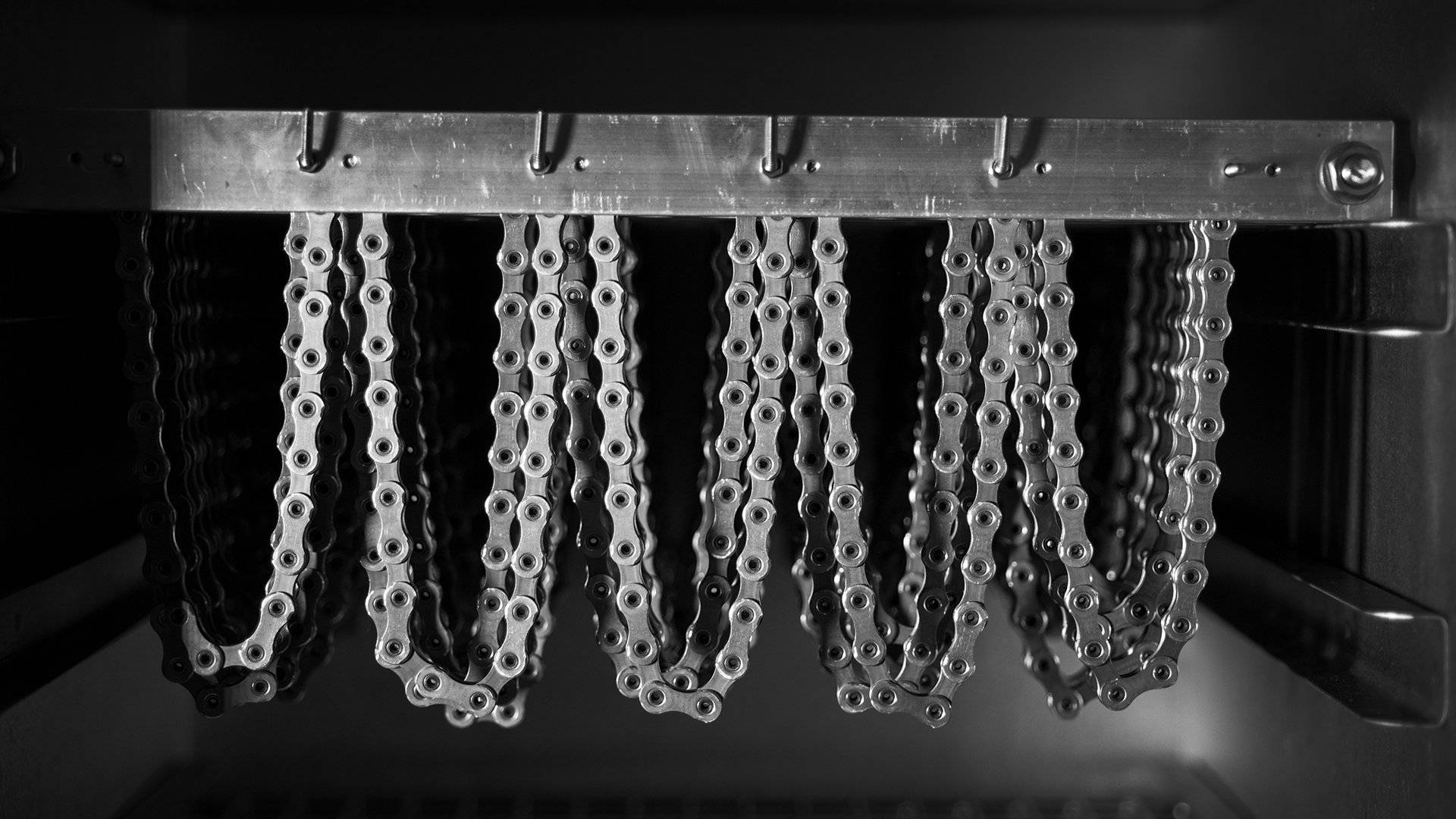PROVING IT
Real-world Olympic medals and yellow jerseys are one thing, but backing up our claims with quantifiable data is at the heart of Muc-Off’s research and development process. Significant investment in equipment and materials was a necessity for working with the world’s greatest teams and athletes, whose view was simply ‘if you can’t prove it, just go home!’ This constant pressure for hard numbers gave birth to an unrivalled research facility that can friction-test every conceivable combination of chain and lubricant, as well as other drivetrain parts. We pride ourselves on our ability to deliver transparent, calculable data that proves the durability and speed of our comprehensive range of lubricants.
5 MINUTE TESTS – ARE YOU SERIOUS?
At Muc-Off, as standard, we will always test our lubricants for a minimum of four to ten hours to best replicate cycling in the real-world. This ensures that the data we publish is not deceptive to consumers. We’ve seen other lube manufacturers produce data that only tests formulas for just 5 minutes. We believe this is not representative of real-world riding, and in fact, the data is practically useless to cyclists. Other reports we’ve seen on chain lube testing have mixed dry and wet lubes together. We think this is highly misleading and unfair, as they are formulated to perform two different functions. When we test lubricants, we only do so by category – wet, dry, harsh and all-weather.
THE TEST
One experiment conducted at Muc-Off’s Development house was to quantitatively report on the durability of leading dry condition chain lubrications using realworld preperation and a realistic riding time - 4 hours. To produce this report, we took 15 of the most popular lubes on the market and performed the following test:

THE RESULTS
As you can see in the results to the left, Muc-Off’s C3 Dry and Bio Dry Lube came out on top against 13 competing lubes in a test that measured lubricant efficiency over the real world testing time of four hours.
There is more to publishing data than just publishing graphs and marketing: the essence of Muc-Off testing is the methodology and transparency of results. It is easy to say you have the fastest lube/chain if there is no context behind your statement.
Several other manufactures may publish their results but without international standards governing how the tests are undertaken, results are always likely to vary and you need to take a look behind the headline numbers to critical factors, such as test duration, to see the whole story.
We are driven to not only making fast lubes, but durable lubes, hence why you will always see a graph of performance over time, not just a snapshot at the best time. Our comparative tests are always undertaken under the same conditions and loads, but we do investigate performance linearity at different loads, especially for track chains where riders can output over 2200 watts.
Essentially this tells us if the lube/chain performs the same under different loads as, for example, the power would be different for a track rider compared to an IRONMAN.
Our lubes are stable, and even after extended test durations, run with very little performance variance over time. We are therefore getting a true linearity graph as the load is varied during the test.
For many other lubes, such as Ceramic Speed UFO chains, that do not exhibit a stable period. This makes it difficult to determine actual performance under different loads because the change in value due to the new load is impacted by the underlying change in performance over time.
Our results are also chain and drivetrain specific and not normalised across different manufacturers hardware, thus giving a true picture of what you ride. It is not a surprise that lubes perform differently with the different surface treatments hardware manufacturers apply e.g Sil-tec and Titanium Carbon Nitride (TiCN) to name just two.












